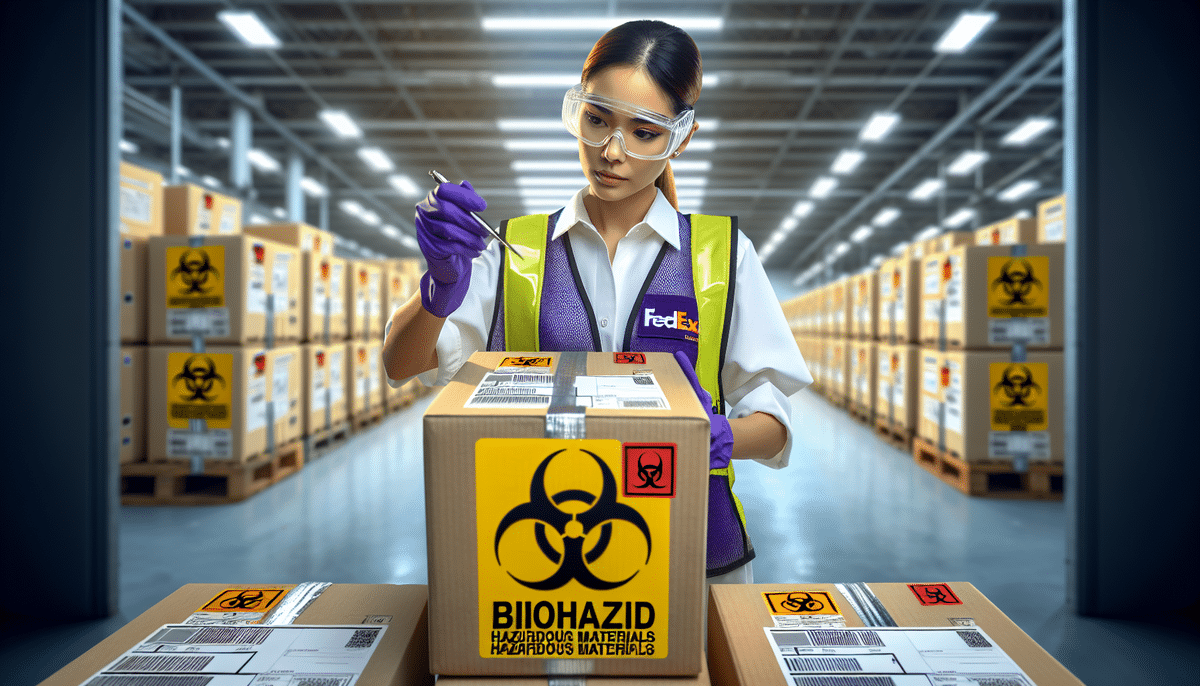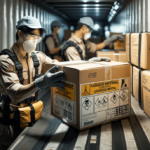FedEx Guidelines for Shipping Toxic or Infectious Substances: A Comprehensive Overview
The transportation of hazardous materials, such as toxic or infectious substances, demands meticulous adherence to federal regulations and industry best practices. Improper handling can pose significant risks to public health, workers, and the environment. To address these challenges, FedEx has developed a robust set of guidelines designed to assist shippers in navigating the complexities of safely and efficiently transporting these sensitive materials.
Understanding the Risks of Shipping Toxic or Infectious Substances
Shipping hazardous materials involves inherent risks that must be thoroughly understood and mitigated. Toxic or infectious substances can cause severe harm to humans, animals, and ecosystems if not properly packaged, handled, and transported. Examples include:
- Chemicals such as solvents and corrosives
- Biological specimens like blood samples and pathogens
- Medical items including syringes, needles, and vials containing bodily fluids
Each category of hazardous material presents unique challenges. For instance, biological specimens require sterile packaging to prevent contamination, while chemical agents need containers that can resist leaks and withstand extreme conditions.
According to the Occupational Safety and Health Administration (OSHA), improper handling of hazardous materials can lead to accidents that result in significant environmental damage and public health crises.
FedEx's Role in Preventing Hazardous Materials from Entering the Mail System
FedEx is committed to the safe and secure transportation of hazardous materials. The company has implemented several measures to ensure that dangerous substances do not infiltrate its transportation network, including:
- Specialized Training: FedEx provides comprehensive training for employees involved in handling hazardous materials, ensuring they are well-versed in safety protocols and emergency response procedures.
- Hazardous Materials Control Center: This dedicated center monitors the transportation of hazardous substances, managing logistics and responding to any incidents that may arise.
- Strict Screening Processes: All packages suspected of containing hazardous materials undergo thorough inspections and testing before being approved for transport.
These initiatives help maintain the integrity of FedEx’s transportation network, minimizing risks to the public and the environment.
Importance of Proper Packaging and Labeling
Effective packaging and labeling are critical components in the safe transport of hazardous materials. FedEx mandates that all hazardous items are:
- Packaged in containers that meet specific design and construction standards to withstand potential hazards such as extreme temperatures and pressure changes.
- Clearly labeled with appropriate hazard warning labels, including the type of hazard, identification number, and UN number.
- Accompanied by detailed shipping papers that provide essential information about the contents and handling requirements.
Proper packaging not only ensures compliance with regulatory standards but also minimizes environmental impact by reducing the risk of spills and leaks during transit.
Tips for Preparing Hazardous Materials for Safe Transportation with FedEx
To ensure the safe transportation of hazardous materials with FedEx, follow these best practices:
- Accurate Classification: Properly classify materials and identify any special handling or regulatory requirements.
- Appropriate Packaging and Labeling: Use designated packaging and ensure all labels are correctly applied.
- Secure Storage: Store and transport dangerous goods in secure locations, away from incompatible materials.
- Proper Documentation: Maintain accurate and complete documentation for all hazardous materials shipments.
- Emergency Preparedness: Be ready to respond effectively to any emergencies that may occur during transportation.
Before shipping, verify that your materials are permitted by FedEx and obtain any necessary permits or approvals to avoid legal complications.
Compliance with Federal Regulations
Shippers must adhere to the Hazardous Materials Regulations (HMR) issued by the Department of Transportation. These regulations govern the packaging, labeling, and transportation of hazardous materials to safeguard public health and the environment.
Non-compliance can result in hefty fines, legal penalties, and environmental damage. FedEx supports shippers in meeting these regulatory requirements by offering resources such as:
- Online training courses
- Detailed guides and manuals
- Access to hazardous materials experts for personalized guidance
Staying informed about the latest regulations and utilizing FedEx’s resources can help ensure that your shipments are compliant and secure.
Consequences of Non-Compliance
Failing to comply with FedEx’s guidelines and federal regulations for shipping hazardous materials can have severe repercussions, including:
- Legal Penalties: Significant fines and potential imprisonment for violations of hazardous materials transportation rules.
- Environmental Damage: Accidents can lead to contamination of soil, water, and air, causing long-term ecological harm.
- Reputational Damage: Negative publicity and loss of customer trust can result from mishandled shipments.
- Operational Disruptions: Delays and additional costs stemming from improperly shipped packages.
Ensuring compliance not only avoids these consequences but also promotes responsible business practices and environmental stewardship.
Common Mistakes to Avoid When Shipping Toxic or Infectious Materials
To prevent complications when shipping hazardous materials with FedEx, avoid the following common mistakes:
- Incorrectly identifying and classifying hazardous materials.
- Using inappropriate packaging or labeling materials.
- Neglecting to complete accurate and necessary documentation.
- Insufficiently informing recipients about the nature of the hazardous materials being shipped.
- Failing to train employees on the proper handling of hazardous materials.
Proper training and adherence to guidelines are essential in mitigating risks and ensuring the safe transport of hazardous substances.
Selecting the Right FedEx Service for Hazardous Materials
FedEx offers a range of services tailored for shipping hazardous materials, including ground, express, and freight options. When choosing a service, consider the following factors:
- Type of Hazardous Material: Ensure the chosen service is approved for the specific type of hazardous material you are shipping.
- Destination and Transit Time: Some materials may require expedited shipping to maintain safety and compliance.
- Packaging Requirements: Adhere to FedEx’s packaging guidelines to ensure the safety of the shipment.
- Regulatory Restrictions: Verify any destination-specific regulations or restrictions that may affect your shipment.
By carefully selecting the appropriate FedEx service, shippers can enhance the safety and efficiency of their hazardous materials transportation.
Responding to Hazardous Material Emergencies During Shipping
In the event of a hazardous material emergency during shipping with FedEx, immediate and appropriate action is crucial. Follow these steps:
- Stay Calm: Maintain composure to effectively manage the situation.
- Contact FedEx: Reach out to the FedEx Hazardous Materials Control Center immediately for guidance and assistance.
- Follow Instructions: Adhere to the instructions provided by FedEx representatives to mitigate the emergency.
- Coordinate with Emergency Responders: FedEx will assist in coordinating with local emergency services if necessary.
Proper handling of emergencies helps prevent further hazards and ensures the safety of all parties involved.
Conclusion
Shipping hazardous materials, including toxic or infectious substances, demands a high level of responsibility and strict compliance with federal regulations. By following FedEx’s comprehensive guidelines, shippers can ensure the safe and efficient transportation of these materials, thereby protecting public health, safety, and the environment. Leveraging FedEx’s resources and adhering to best practices are essential steps in managing the complexities of hazardous materials shipping.








